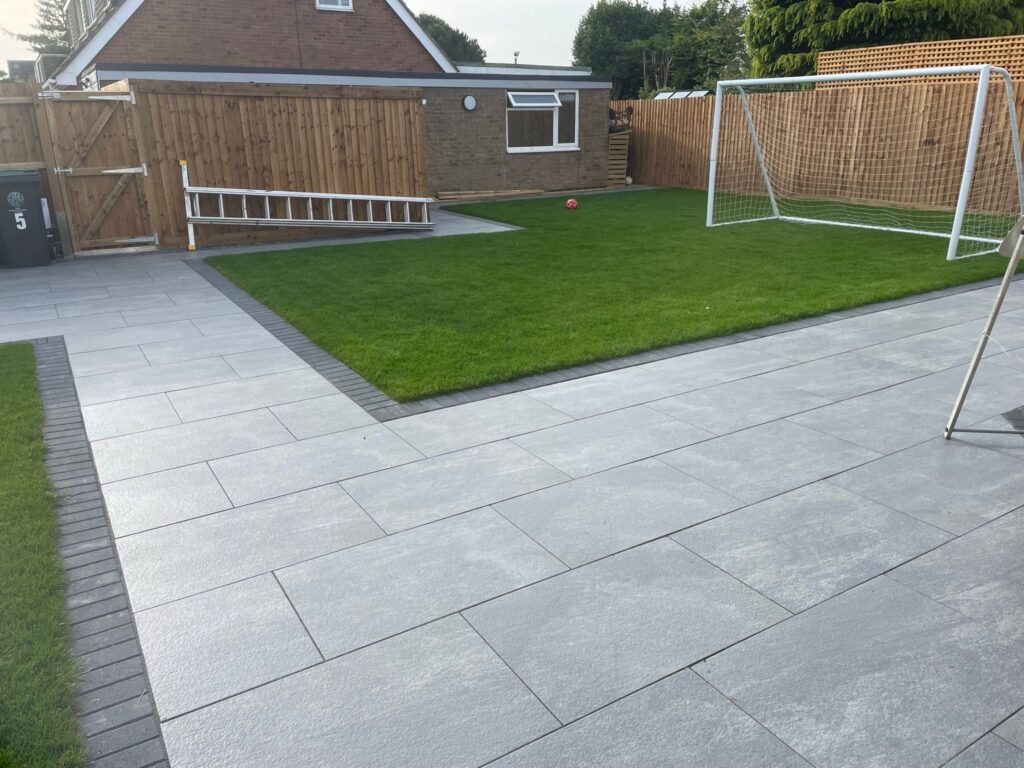The Role of Edging in Resin Bound Patio Design
Introduction: Attention to detail is key when creating a stunning and functional outdoor space with a resin-bound patio. One often overlooked aspect of patio design is the edging. While seemingly small, the choice of edging material and style can significantly impact the overall aesthetic appeal, structural integrity, and longevity of your patio. In this blog post, presented by Daventry Driveways & Patios, we’ll explore the crucial role of edging in resin-bound patio design and how it can elevate the look and performance of your outdoor space.
1. Definition and Structure
Edging serves as a boundary that defines the shape and structure of your patio. It creates a clean, crisp border that separates the resin-bound surface from surrounding landscaping elements, such as lawns, flower beds, or gravel pathways. By delineating the patio’s edges, edging helps maintain the integrity of the surface and prevent the spreading or displacement of the resin-bound material.
2. Visual Enhancement
The right choice of edging material can enhance your patio’s visual appeal and tie together your outdoor space’s overall design scheme. Consider the following options:
- Contrast: Choose edging materials that contrast with the colour and texture of the resin-bound surface to create visual interest and define the boundaries of the patio.
- Complement: Alternatively, select edging materials that complement your patio’s colour palette and style for a cohesive and harmonious look.
- Texture: Explore edging options with different textures, such as natural stone, brick, or timber, to add depth and tactile interest to your patio design.
3. Functional Benefits
Edging provides several practical benefits that contribute to the long-term performance and durability of your resin-bound patio:
- Containment: Properly installed edging prevents the resin-bound material from spreading or migrating beyond the designated area, ensuring a neat appearance.
- Stability: Edging helps to stabilise the edges of the patio, reducing the risk of erosion, cracking, or displacement caused by foot traffic, vehicle weight, or environmental factors.
- Drainage: Certain types of edging, such as porous materials or open-cell designs, can enhance water drainage and prevent pooling or runoff on the patio’s surface, improving safety and usability.
4. Design Flexibility
Edging offers endless possibilities for customisation and creativity in resin-bound patio design:
- Curves and Angles: Explore different edging profiles, such as curved, straight, or angular shapes, to create dynamic and unique patterns that complement the contours of your outdoor space.
- Inset Patterns: Incorporate decorative inserts or borders within the edging design, using contrasting colours or textures to add visual interest and focal points to your patio.
- Integrated Features: Integrate functional elements into the edging, such as built-in seating, planters, or lighting fixtures, to enhance the usability and versatility of your patio.
Conclusion: In summary, edging plays a crucial role in resin-bound patio design, providing structural support, visual definition, and functional benefits that enhance the beauty and performance of your outdoor space. Whether you’re aiming for a sleek and contemporary look or a rustic and natural feel, the choice of edging material and style can help you achieve your desired aesthetic while ensuring your patio’s long-term durability and integrity.
Call us on: 01327 221 298
Click here to find out more about Daventry Driveways & Patios
Click here to complete our contact form and see how we can help with your driveway needs.

